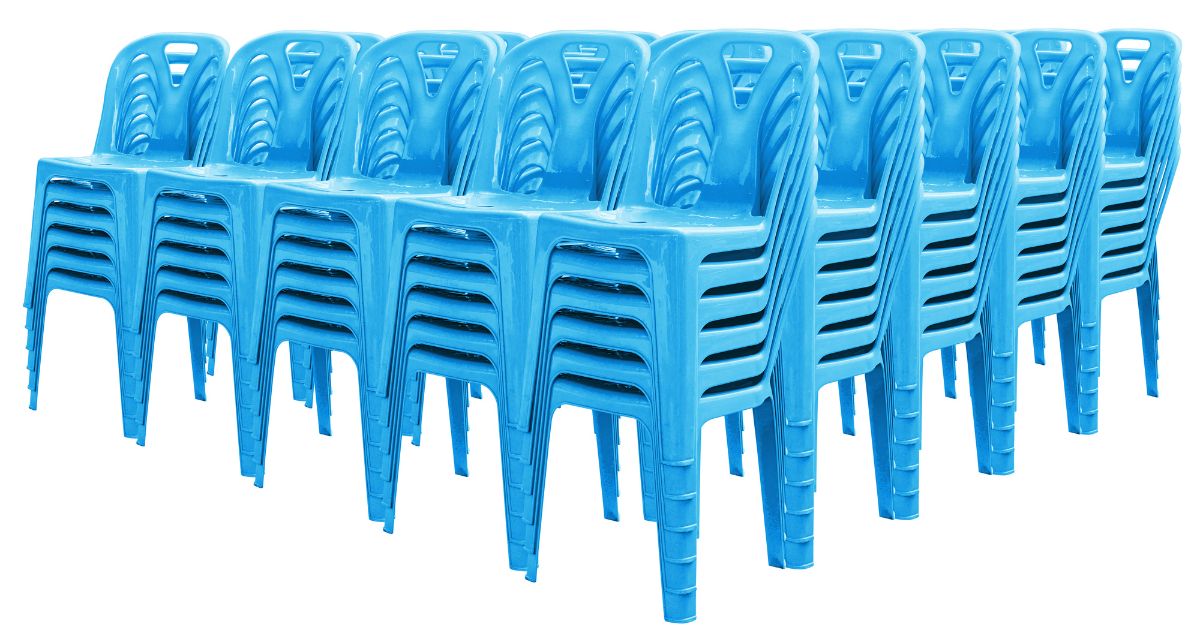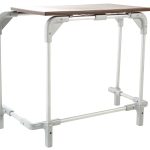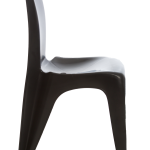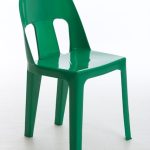Are you tired of struggling to stack plastic chairs efficiently? Look no further! In this article, we will guide you through the process step by step, ensuring that you can stack your chairs with ease and precision.
From assessing the chair dimensions to choosing the right stacking technique, we’ve got you covered. Say goodbye to wobbly and disorganised stacks – it’s time to learn how to stack those chairs like a pro!
Assessing the Chair Dimensions
Assessing the chair dimensions is crucial for determining the most efficient way to stack them. When stacking plastic chairs, it is important to consider their height, width, and weight. By understanding these dimensions, you can optimise your stacking technique and maximise space utilisation.
To begin with, let’s focus on the height of the chairs. Take a moment to measure how tall each chair stands when fully assembled.
This will help you determine how many chairs can be stacked vertically without toppling over or causing any damage. Additionally, knowing the height will assist in calculating the overall height of the stack, allowing you to plan accordingly when storing or transporting them.
Next, consider the width of each chair. Measure the widest point of each chair to identify how much space they occupy when placed side by side. By doing so, you can assess how many chairs can fit horizontally in a given area while maintaining stability and preventing any potential collapse.
Another factor to keep in mind is the weight of each chair. Lighter plastic chairs may be easier to handle but may require additional stabilisation measures during stacking to ensure they remain secure. Conversely, heavier chairs may provide more stability but could pose challenges when lifting or moving stacks.

Preparing the Chairs for Stacking
To get started, you’ll want to make sure each chair is positioned correctly for easy stacking. Begin by aligning the chairs in a straight line, facing the same direction. Make sure there is enough space between each chair to allow for easy manoeuvrability when it comes time to stack them.
Next, check that the legs of each chair are firmly planted on the ground. This will ensure stability and prevent any wobbling or tipping during the stacking process. Give each chair a gentle push to test its stability before moving on.
Once all the chairs are aligned and stable, it’s time to start stacking! Start by lifting one chair at a time and placing it neatly on top of another chair. Be sure to position each chair so that its legs fit snugly into the gaps between the legs of the chair below it.
As you continue stacking, be mindful of maintaining balance and stability. Avoid placing too many chairs on top of one another without adding additional support or stabilising features like straps or bands. This can help prevent accidents and injuries caused by unbalanced stacks.
If you need to stack multiple rows of chairs, make sure there is enough space between each row for easy access and removal. You don’t want chairs getting stuck or tangled when trying to retrieve them later.
Finally, always double-check your stacked chairs for stability before leaving them unattended. Give them a gentle shake or tap to ensure they won’t easily topple over.
Choosing the Right Stacking Technique
When choosing the right stacking technique, it’s important to consider factors such as stability and ease of access for future use or storage. One popular technique is the straight stack, where you simply align the chairs in a straight line one on top of another.
This method is easy to do and allows for quick access when you need to retrieve a chair from the stack. However, keep in mind that this technique may not be as stable as others, especially if the chairs are lightweight or have an uneven shape.
Another option is the crisscross stack, where you alternate the direction of each chair as you stack them. This creates a more secure and stable pile since each chair supports the ones above it. The crisscross stack also helps distribute weight evenly, reducing the risk of tipping over. It may take a bit more time and effort to arrange the chairs in this manner, but it can be worth it for added stability.
If space is an issue, consider using a nesting technique. With this method, you flip each chair upside down and nestle them together so that they fit snugly within each other. Not only does nesting save space during storage or transportation, but it also protects the chairs from scratches or damage caused by rubbing against one another.
Remember to always follow manufacturer guidelines when stacking plastic chairs to ensure their longevity and safety. By considering factors like stability and ease of access when choosing your stacking technique, you can optimise efficiency while maintaining convenience for future use or storage purposes.
Positioning the First Chair
Start by placing the first chair in the desired location, making sure it’s stable and positioned correctly. Begin by examining the area where you want to stack the chairs. Look for a spot that is level and free from any obstructions. It’s important to choose a stable surface so that the chairs won’t wobble or topple over.
Once you’ve found a suitable spot, position the chair in an upright manner. Ensure that all four legs are firmly on the ground and evenly distributed. This will help maintain balance when stacking additional chairs on top.
Check that there is enough space between this first chair and any nearby walls or furniture. You don’t want them to collide or cause damage during stacking or unstacking processes. Leave a small gap of about one to two inches for ease of movement.
It’s also crucial to align the backrest of each chair in the same direction as you stack them. This will create a neat and uniform appearance while maximising stability. Plastic chairs with armrests should be facing inward towards each other as well.
Lastly, push down gently on the seat of the chair to ensure it’s securely positioned on its legs before proceeding with stacking more chairs above it.
Aligning Subsequent Chairs
Align the subsequent chairs by ensuring that the backrests are facing in the same direction and the armrests are turned inward towards each other. This simple step will help you stack plastic chairs efficiently, maximising space and making them easier to transport or store.
As you line up the chairs, make sure that all of their backrests are pointing in one consistent direction. This uniform alignment creates a neat and organised appearance, while also preventing any unnecessary shifting or movement when stacked. With backrests facing the same way, you can easily stack multiple chairs without worrying about them becoming unstable.
Next, focus on turning the armrests inward towards each other. By doing this, you create a secure locking mechanism between the chairs. The armrest of one chair should fit snugly into the gap created by two adjacent armrests of another chair. This interlocking arrangement ensures stability and prevents any sliding or toppling when stacking multiple chairs together.
When aligning subsequent plastic chairs, keep in mind that consistency is key. Ensure that each chair is aligned in exactly the same manner as its neighbouring chair. Take a moment to step back and assess your progress to ensure that all of your aligned chairs appear visually symmetrical.
Maximising Stability While Stacking
Now that you have learned how to align subsequent chairs when stacking them, let’s move on to maximising stability while stacking. Ensuring that your stack of plastic chairs remains stable is crucial for preventing accidents and maintaining the integrity of the chairs.
Firstly, make sure to place the heaviest chair as the base of your stack. This will provide a solid foundation and prevent the stack from toppling over. If you are unsure which chair is the heaviest, try lifting each one and feeling for differences in weight.
Next, be mindful of the surface on which you are stacking the chairs. Opt for a flat and level area to minimise any wobbling or instability. Avoid uneven surfaces or obstacles that could cause the stack to become unbalanced.
When placing each chair onto the stack, ensure that it sits securely on top of the previous one. Make sure all legs are aligned properly and not overlapping with any other chair’s legs. This will help distribute weight evenly throughout the stack and maintain stability.
Additionally, consider using chair stoppers or rubber pads between each chair layer to create friction and reduce sliding. These can be easily purchased online or at furniture stores.
Lastly, always remember not to exceed a safe height when stacking chairs. Depending on their design and material, there may be limitations on how high they can be stacked without compromising safety.
Avoiding Damage During Stacking
To avoid damaging the chairs while stacking, be mindful of any sharp edges or protrusions that could scrape or scratch the surface of the chairs. Plastic chairs are durable, but they can still be susceptible to scratches and scuffs if not handled with care. When stacking them, take a moment to inspect each chair for any potential hazards. Check for loose screws or nails that may stick out and cause damage when stacked together. If you come across any sharp edges or rough spots, make sure to address them before proceeding.
Once you have ensured that your chairs are free from any potential dangers, you can begin stacking them in an efficient manner. Start by placing one chair on top of another, ensuring that they align properly to maximise stability. As you continue stacking, pay attention to how evenly distributed the weight is on each chair.
Avoid placing too much weight on one side, as this may result in unbalanced stacks that could potentially topple over.
When handling multiple chairs at once, it’s essential to lift and lower them carefully to prevent unnecessary impact or collisions between the surfaces. Take your time and maintain control over the movement of each chair as you stack them together. By doing so, you can minimise the risk of accidentally scraping or scratching the surface of your plastic chairs.
Stacking Chairs in Different Settings
When stacking chairs in different settings, you should consider the specific layout and arrangement needed for each environment. In a classroom setting, for example, it is important to create neat and organised rows of stacked chairs. Start by aligning the chairs side by side, ensuring that they are all facing the same direction.
Then, stack one chair on top of another, making sure that they are stable and secure. Remember to place a protective layer between each chair to prevent any scratches or damage.
Conference chairs or meeting room chairs, on the other hand, you may want to consider stacking the chairs in a different manner. Instead of creating long rows, you can stack them in smaller groups around tables or at designated areas in the room. This allows for easy access when participants need to sit down again.
In outdoor settings such as gardens or event venues, it is essential to take weather conditions into account when stacking chairs. If there is a chance of rain or strong winds, make sure to stack the chairs securely and cover them with tarpaulin or plastic sheets for protection.
When stacking chairs in a restaurant or cafe setting, think about maximising space efficiency while still maintaining an aesthetically pleasing arrangement. Consider using chair carts or racks specifically designed for this purpose to save time and effort.
Overall, no matter what setting you find yourself in when stacking chairs, always prioritise safety and functionality. By considering the specific layout and arrangement needed for each environment, you can ensure that your stacked chairs are not only organised but also practical for future use.
Unstacking Chairs Safely and Efficiently
Unstacking chairs safely and efficiently can be achieved by carefully separating each chair and ensuring they are stable before moving them. When unstacking chairs, it is important to approach the task with caution to prevent any accidents or damage. Start by identifying the topmost chair in the stack and remove any items that might be placed on it.
To begin, gently lift the top chair from its position, making sure to maintain a firm grip on both sides of the seat. Slowly pull it away from the other chairs, being mindful of any obstructions or obstacles in your path. Once you have successfully separated the first chair, check its stability before proceeding further.
Inspect the chair for any signs of damage or instability such as loose screws or wobbly legs. If everything looks secure, place the chair securely on a flat surface to create a stable base for unstacking additional chairs.
Repeat this process for each subsequent chair in the stack. Take your time and avoid rushing through the task as haste can lead to accidents. Remember to always prioritise safety over speed when unstacking chairs.
Once all the chairs have been safely separated and placed on a stable surface, you can proceed with moving them to their desired location. Be mindful of your posture while lifting and carrying chairs to prevent strain or injury.
Conclusion
In conclusion, stacking plastic chairs efficiently is crucial to save space and ensure safety. By assessing the chair dimensions and choosing the right stacking technique, you can maximise stability and avoid damage during stacking.
Whether in a classroom, office, or event setting, following proper procedures for positioning, aligning, and unstacking chairs is essential. Remember to handle chairs with care to prolong their lifespan. With these tips in mind, you’ll be able to stack and unstack plastic chairs safely and efficiently in any setting.








